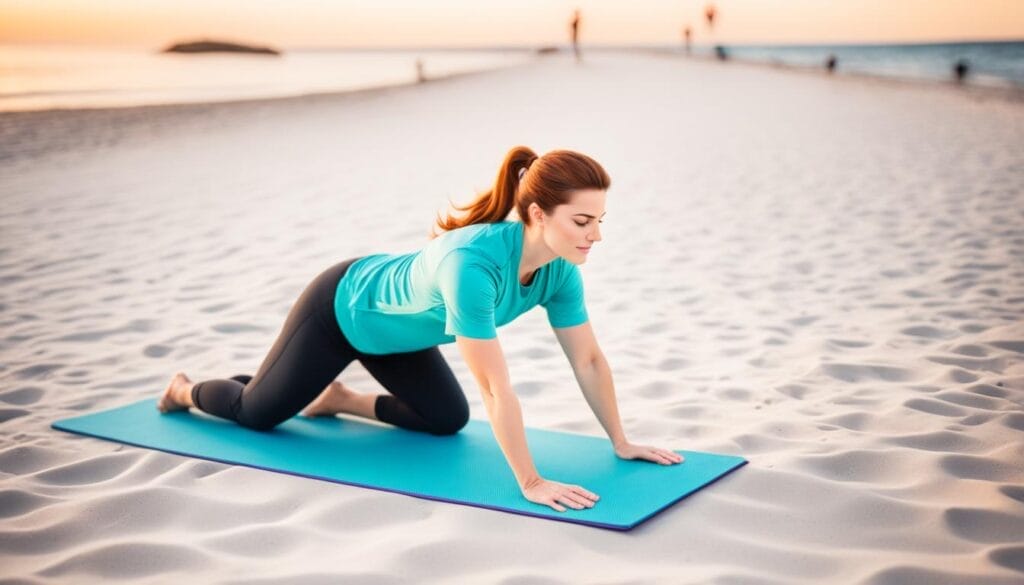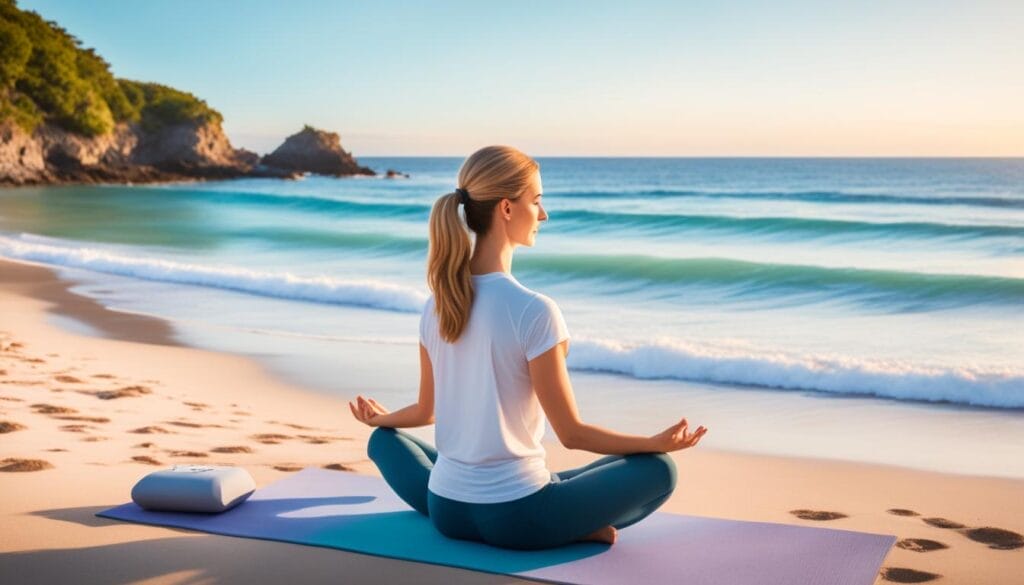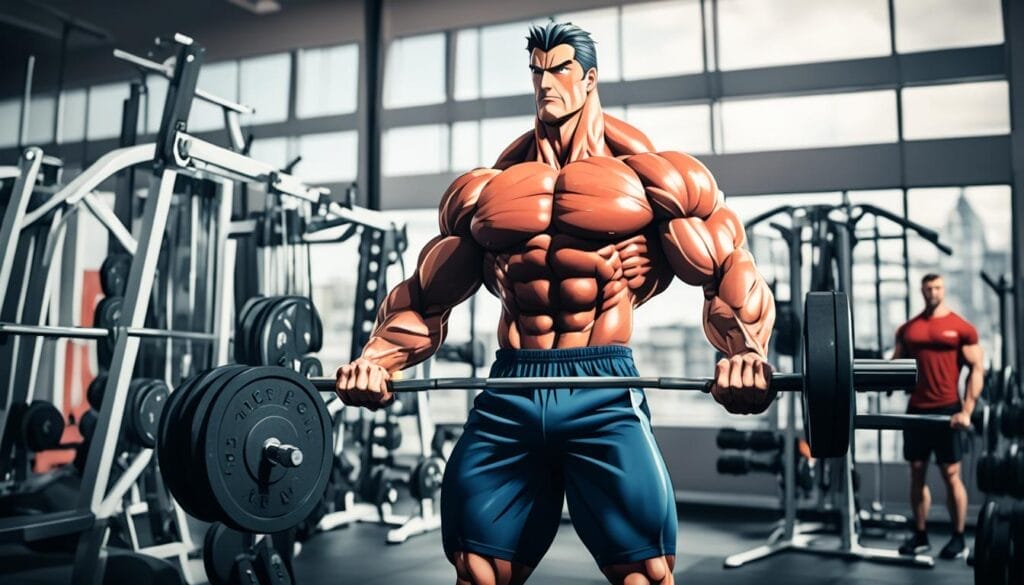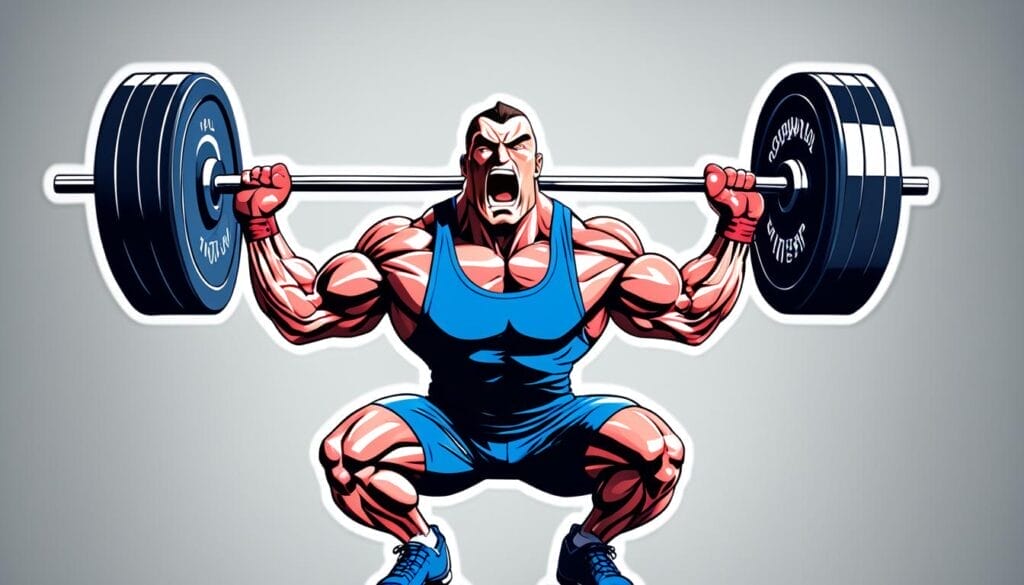Rest and recovery are key for anyone into fitness or sports. They help get the best results and avoid muscle pain. When you love working out, like me, you learn how vital it is to balance pushing hard and letting your body recover.
A few years ago before COVID struck, I aimed to run a marathon, pushing my endurance to new heights. My routine involved long runs, strength work, and tough cardio. I felt proud of my effort but felt the wear on my body with fatigue and stiffness.
After one tough workout, I decided to try new ways of relaxing for better sleep and to feel better overall. I found out about active recovery, a method known for its quick recovery, better blood flow, less injuries, and mental health. I added gentle exercises and stretches to my routine using special tools like resistance bands, foam rollers, and yoga mats.
The FORM Post-Workout Active Muscle Recovery by TensCare became my top choice for helping with rest and recovery. It uses EMS to quicken muscle recovery, easing soreness after hard workouts. Its many settings, easy-to-carry nature, and simplicity put it at the forefront of my recovery plan.
Using both active and passive recovery, along with tools like the FORM, I fine-tuned my recovery. This helped my muscles repair, lowered lactic acid, and reduced stress. It meant not just getting physically better but also mentally recharged.
If reaching peak fitness while mastering recovery techniques is your goal, let’s dive into this together. We’ll look into active recovery, the value of good sleep, and ways to better our rest and recovery times.
Key Takeaways:
- Rest and recovery are crucial for maximising results and preventing muscle soreness.
- Active Recovery involves low-intensity exercises that promote muscle recovery and reduce stiffness.
- The FORM Post-Workout Active Muscle Recovery device from TensCare is a standout device for enhancing active recovery.
- Combining active recovery with passive rest can optimise the recovery period and enhance overall performance.
- Quality sleep is essential for rest and recovery, promoting physical health and mental well-being.
What is Active Recovery and Why Is It a Good Idea?
Active Recovery involves doing light exercises after your workout. This helps muscles heal and reduces stiff muscles. Unlike just resting, it keeps your blood moving, which is good for recovery.
After a tough workout, light exercises can help a lot. They make blood flow better in your muscles. This means faster healing and less muscle ache. It also helps send oxygen and good stuff to tired muscles, helping them get stronger.
This type of recovery isn’t just for the body. It also stops you from getting hurt and makes you feel good. Moving after a workout can boost your mood, lower stress, and make you feel proud.
“Engaging in light exercises after an intense workout increases blood flow to the muscles, promoting faster recovery and reduced muscle soreness.”
It’s a top choice for those into fitness or sports. By doing some light moves after their main workout, people can recover better. This speeds up healing and brings many good effects for their body and mind. It’s a smart move for anyone serious about their health and fitness.
Active Recovery Benefits:
- Faster recovery
- Reduced muscle soreness
- Improved circulation
- Injury prevention
- Psychological well-being
Active Recovery vs. Rest: Which is Better?
Traditional rest days are crucial for recovery, but Active Recovery has its perks too. It encourages the body to repair itself actively. This speeds up healing, improves muscle repair, and aligns collagen fibres better. Plus, light exercises help get rid of lactic acid. This lowers muscle soreness and fatigue.
Doing gentle activities keeps people in touch with their bodies. It makes them more aware of how they’re feeling. This connection is key for noticing what the body needs in recovery.
Both active and passive recovery work, but Active Recovery shines in many ways. It boosts healing, muscle repair, and lowers lactic acid. It also improves overall recovery results. By doing light exercises, recovery is quicker, and blood flow improves.
“Active Recovery provides a holistic approach to rest and recovery, allowing for improved physical and mental well-being.”
Picking Active Recovery over just resting does wonders for body and mind. After a session, light exercises help more than just muscles. They make you feel accomplished and less stressed. Active Recovery lets you play a big part in your own recovery. It boosts your mindset too, for a positive and healthy recovery.
For the best results, mix Active Recovery with planned rests. Combining these methods creates a balanced way to rest, rejuvenate, and get back to peak performance.

Incorporating Active Recovery at Home
Active recovery is as important as passive rest. It’s easy to do at home. You don’t need a gym or special tools. Use things like resistance bands, foam rollers, and yoga mats. They help you feel better and recover faster.
Resistance Bands
Resistance bands are great for home workouts. They offer gentle resistance for stretching and strength. Use them to get more flexible, improve blood flow, and help your muscles recover.
Foam Rollers
Foam rollers are perfect for releasing muscle tension. They work by applying pressure to tight spots. This helps your muscles recover better.
Yoga Mats
Doing yoga or stretching on a soft mat is good for you. It helps your muscles relax and recover. You’ll feel more flexible and less tense by doing this.
Massage Guns
Massage guns give deep tissue-like massages. They improve blood flow and loosen up tight muscles. You can have a spa-like treatment at home.
Using these tools, you can do active recovery at home. This will make you feel refreshed and ready to go. Pick what you like from resistance bands to massage guns to boost your recovery.
Remember to adjust your exercises to what your body needs. It’s about finding a good challenge without overdoing it. This helps you improve while letting your body heal.
Adding active recovery to your day speeds up how you recover. With the right tools, like resistance bands or massage guns, you can make the most of your rest time. These options are easy and great for anyone who wants to feel better and perform well.
Understanding the Importance of Sleep for Rest and Recovery
Sleep is vital for our body’s health and our quality of life. It helps to heal us and keeps our mind sharp. Getting good sleep is more than just resting. It’s an active process where our bodies heal and grow.
There are two main types of sleep: NREM and REM. NREM has three stages, each with its own role in helping us feel good.
While we sleep, our body heals itself. Sleep is when our cells get fixed and new ones are made. This helps our physical health and heals us from injuries and sickness.
Our hormones are also balanced during sleep. Growth hormone, melatonin, and cortisol are essential for our health and mood. Sleeping enough keeps these in check, keeping us well.
Sleep is also key for our immune system. It gets stronger when we sleep, fighting off sickness. Good sleep is like nature’s way of keeping us healthy.
Sleep helps us remember things too. REM sleep, where we dream a lot, is important for our memory. Missing out on sleep makes it hard to learn and remember things.
If you don’t sleep enough, it can really hurt your health. People who don’t sleep well tend to have more health problems. They can get obese, have heart problems, feel sad, and think poorly. So, sleep is super important for feeling your best and staying healthy.
Next, we’ll talk about how to sleep better. We’ll look at making a good bedtime routine, setting a regular sleep time, and preparing a nice place to sleep. Stick around to learn how to get the best rest!

Strategies for Improving Sleep Quality
Improving your sleep quality is key for feeling good and healthy. There are many proven ways to do this. By trying new habits, you can sleep better and feel more lively during the day.
- Maintain a consistent sleep schedule: Wake up and go to bed at the same time every day. This helps set your body’s clock. It makes falling asleep and waking up easier.
- Create a relaxing bedtime routine: Try calming activities before sleep. Reading a book or deep breathing relaxes your body. This tells your body that it’s time to rest.
- Create a sleep-inducing environment: Make your bedroom perfect for sleep. It should be dark, quiet, and comfy. Use blackout curtains, earplugs, or a white noise machine to keep out noise.
- Minimise screen exposure: The blue light from screens messes with your sleep cycle. Stop using electronics an hour before you sleep. This helps you fall asleep easier.
- Avoid stimulants: Coffee and cigarettes stop you from sleeping well. Don’t have them before bedtime. This will help you sleep through the night.
- Adopt healthy sleep hygiene habits: Large meals and alcohol before bed are bad for sleep. Exercise helps you sleep better, but not too hard right before sleeping, as it’s too stimulating.
- Seek professional help: If you can’t sleep well and think there’s a problem, see a doctor. They can help with a specific plan to tackle your sleep issues.
Follow these tips to sleep better and feel more alert during the day. A good night’s sleep is vital for your health and energy.

Additional Tips for Optimising Sleep and Rest
There are more ways to make your sleep and rest better. Think about the amount of light, what you drink, and when you sleep. Choose the right mattress and pillows and maybe take some helpful supplements. All these things can help you sleep well and feel rested.
Regulate Circadian Rhythms with Lighting
Light before bed affects your body clock. Turn off bright blue lights from your devices. Instead, use softer lights to tell your body it’s time to relax.
Monitor Liquid Intake
Drink less close to bedtime to avoid waking up for the toilet. A night of sleep without interruption is more refreshing.
Maintain a Consistent Sleep Schedule on Weekends
It’s hard, but try to stick to your sleep routine on weekends. This keeps your body in rhythm. Good sleep habits mean you rest better.
Choose Sleep-Friendly Supplements Wisely
Melatonin can aid sleep, but it’s wise to check with a doctor first. They’ll ensure it won’t clash with other drugs and advise the best dose.
Evaluate and Upgrade Your Sleep Surface
The right mattress and pillows are key for good sleep. Check yours aren’t causing you discomfort. Upgrade them if needed for a better sleep setup.
Use these extra tips for sleep and rest. Think about lighting, drinks, and when you sleep. Don’t forget to choose the right supplements and check your sleep gear. Doing these things can really boost your sleep and how healthy you feel.
| Tips for Optimising Sleep and Rest | Benefits |
|---|---|
| Regulate Circadian Rhythms with Lighting | Improved sleep-wake cycle and sleep quality |
| Monitor Liquid Intake | Reduced bathroom disruptions during the night |
| Maintain a Consistent Sleep Schedule on Weekends | Establishment of a steady circadian rhythm |
| Choose Sleep-Friendly Supplements Wisely | Promotion of better sleep, with healthcare professional guidance |
| Evaluate and Upgrade Your Sleep Surface | Enhanced comfort and support during sleep |

Summing It Up
Rest and recovery are key for top performance and health. Active Recovery mixes movement with rest for many good effects. These include getting better quickly, boosting blood flow, stopping injuries, and feeling better.
You can do Active Recovery at home. All you need are things like bands, foam rollers, yoga mats, and a massage gun. These items will help you relax and heal faster.
Sleep is very important for your body and mind. Good sleep helps your body work well and makes you sharp. It also keeps your mood good and gives you a better life.
To sleep well, stick to a set sleep time and do things that relax you at night. Make sure your room is good for sleep. This can really help you rest and get back your energy.
Think about other things, like dealing with stress and not napping too much. Also, pay attention to the light and drinks before bed. Having a nice bed to lie on is important too.
By making rest and recovery a priority, you make your sleep better. This, in turn, boosts your health and how you feel every day.
FAQ
What is Active Recovery and why is it important for rest and recovery?
Active Recovery means doing light exercises after working out. This helps your body heal and your muscles to recover. It makes your blood flow better, stops your muscles from getting too tight, and cleans out waste. This leads to quicker healing, less pain, and a stronger body. It also helps prevent injuries and makes you feel better in your mind.
How does Active Recovery compare to rest?
Active Recovery is better than just resting. It helps your body fix itself faster than if you just lie down. It also makes your muscles repair themselves in a better way. Active Recovery gets rid of harmful lactic acid, so you feel less sore and tired. Plus, it makes you more aware of your body, so you’re less likely to get hurt.
How can I incorporate Active Recovery into my daily routine at home?
At home, you can do Active Recovery using simple tools like resistance bands and foam rollers. These help you gently stretch and keep your muscles relaxed. Yoga or just stretching on a mat makes your muscles feel better too. And using a massage gun boosts blood flow, easing tension and speeding up recovery.
Why is sleep important for rest and recovery?
Sleep is vital for getting better after exercise. It helps your body fix its cells, balance hormones, fight off diseases, and remember things. Good sleep is key for being strong and sharp during the day. Without enough sleep, your health and mind can suffer.
How can I improve sleep quality for better rest and recovery?
Make sleep better by going to bed and waking up at the same time every day. Have a relaxing bedtime routine. And keep your bedroom quiet and dark, avoiding screens and caffeine before bed. These tips, along with regular exercise and maybe some expert advice, should improve your sleep.
What are some additional tips for optimising sleep and rest?
To sleep and rest well, watch the light and avoid too much blue light at night. Be careful with when you drink liquids, so you don’t wake up to bathroom trips. Try to keep your sleep schedule stable, even if it’s the weekend. And, think about using sleep supplements wisely, checking your bed and pillows, and making your bed as comfy as possible.
Source Links
- https://medium.com/@atul3297/the-science-of-sleep-unlocking-the-secrets-to-better-rest-and-recovery-1b171283e4ed?responsesOpen=true&sortBy=REVERSE_CHRON
- https://tenscare.co.uk/blogs/news/active-recovery-unlocking-the-secret-to-effective-post-workout-muscle-repair-and-growth
- https://www.bensonsforbeds.co.uk/sleep-hub/unlocking-the-secrets-to-a-restful-nights-sleep/
Share Me:
READY TO UNLEASH
YOUR BEST SELF?
Click “Sign Me Up!” And Start Your Fitness Transformation!





